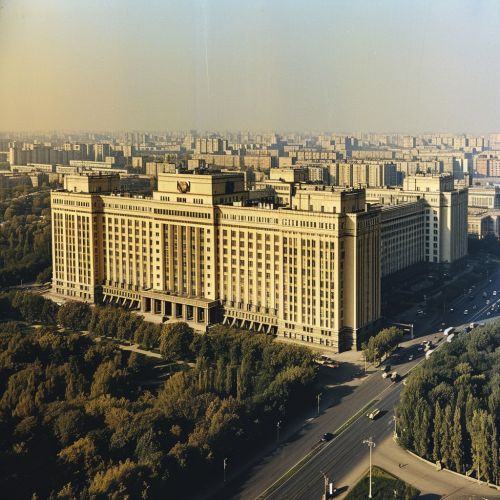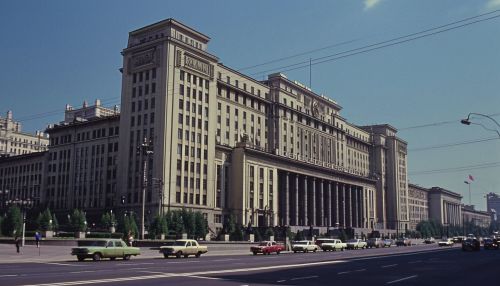People's Commissariat
Origins and Early History
The People's Commissariat was a governmental institution in the Soviet Union, established in 1917 following the October Revolution. The term 'People's Commissariat' was used to denote the major governmental departments in the Soviet Union until 1946, when they were renamed 'ministries'.


The People's Commissariats were established as part of the RSFSR, the largest and most populous of the fifteen republics of the Soviet Union. The RSFSR was established in the aftermath of the October Revolution, and the People's Commissariats were a key part of its governmental structure.
Structure and Function
The People's Commissariats were headed by People's Commissars, who were members of the Council of People's Commissars. This council functioned as the government of the RSFSR and later, the Soviet Union. The People's Commissariats were responsible for various aspects of governance, including finance, education, health, and agriculture. Each Commissariat was responsible for implementing policy and legislation in its respective field.
Notable People's Commissariats
There were several notable People's Commissariats, each with its own unique role and function within the Soviet government.
People's Commissariat for Education
The People's Commissariat for Education, also known as the Narkompros, was responsible for the administration of public education and culture in the Soviet Union. This included the development of educational policy, the establishment of educational institutions, and the training of teachers.
People's Commissariat for Health
The People's Commissariat for Health, or Narkomzdrav, was responsible for the health and wellbeing of the Soviet population. This included the administration of hospitals, the training of medical personnel, and the implementation of public health initiatives.
People's Commissariat for Agriculture
The People's Commissariat for Agriculture, or Narkomzem, was responsible for agricultural policy and the administration of agricultural production in the Soviet Union. This included the implementation of collectivization policies, the distribution of agricultural products, and the management of agricultural labor.
Transition to Ministries
In 1946, the People's Commissariats were renamed 'ministries' as part of a broader restructuring of the Soviet government. The Council of People's Commissars was also renamed the Council of Ministers. Despite these changes, the basic structure and function of the institutions remained largely the same.
Legacy
The People's Commissariats played a significant role in the governance of the Soviet Union. They were responsible for implementing the policies and directives of the Soviet government in a wide range of fields, from education and health to agriculture and finance. Despite their renaming in 1946, the legacy of the People's Commissariats continues to be felt in the structure and function of modern Russian government institutions.
